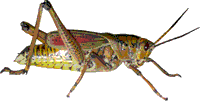Entomology Collections, Miscellaneous
Date of this Version
1988
Abstract
In Italy, larvae of the syrphid fly, Cheilosia corydon (Harris) (=grossa Fallen), infest the flower buds, stems, and roots of Carduus nutans L. and C. pycnocephalus L. (Compositae), both serious weeds in the United States. The fly was studied as a candidate biological control agent of musk and Italian thistle in North America. The host range of C. corydon is narrow, restricted to plants of the tribe Cardueae. Cirsium crassicaule (Green) Jeps., a threatened U.S. species, was marginally suitable as a host in laboratory trials. In open-field oviposition tests, using replicated and randomized plantings, no oviposition was observed on any U.S. Cirsium species tested, including C. crassicaule. Our data indicate that C. corydon is sufficiently host specific to introduce into the U.S. for the biological control of musk and Italian thistle.


Comments
Published in Ann. Entomol. Soc. Am. 81(2): 225-232 (1988).